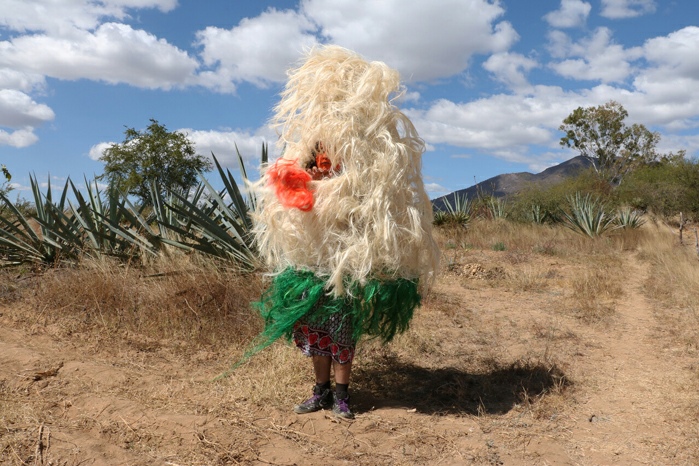Press Release
The exhibition Shadowily in different tongues brings together artists and local communities that resist the social and political processes that are driving planet Earth and its human and non-

International Archives 1st half of 2025
Shadowily in different tongues
Ifa Gallery, Stuttgart (Germany)
21.03 - 13.07.2025

The participating artists and communities develop counter-
The collectives Tequiocalco, Calpulli Tecalco, and Colectiva Milpa urbana activate strategies to defend the territories and languages they inhabit, lands besieged by relentless extractivism. These geographies have long been home to their communities. Yet today, capital forces extract minerals, intoxicate water, and privatize seeds and ancestral knowledges, turning inherited wealth into disposable commodities. Similar struggles unfold in Greenland, where Lise Autogena and Joshua Portway document the conflict in Narsaq, where a mountain, rich in uranium, is at stake. Crisanto Manzano Avella, a Zapotec film-
The works of Minia Biabiany, Katya Mora, Edith Morales, and Karen Michelsen with Luz Y Color and Alejandra Ambukka Tafur articulate an intimate connection between body and territory. They challenge dominant systems of cognition and lead into the realms of spirituality, intuition, and poetry, exploring colonial continuities and tracing traumas embedded in bodies and the scars they have left behind. They follow the diasporic paths of people and give voices a space to tell hidden, suppressed or unheard stories, confronting structural inequities and seeking moment of healing. In works by Susanne Kriemann and the Panósmico collective the material speaks as witness, reflecting on the connections between capitalism, colonialism, and the petrochemical industry. New specimens and objects are created that document the biological and cultural permeation of plastics in our consumer culture and continue as speculations into the future.
The artists Bruno Varela, Naomi Rincón Gallardo, Keiko Kimoto and Gabriel Rossell Santillán draw on diverse perspectives and visual worlds, from ancestral Abya Yala (American) knowledge and critical indigenous thinking to contemporary concepts such as queer theory, cyborgs, and posthumanism. Their speculative works question existing norms, are rebellious and exuberant, and expose the wounds left by the colonial-
This exhibition sees itself as a place of resistance and reflection. It invites visitors to come to terms with the past, to develop new perspectives and to search for fairer ways for a common future.
Exhibition curated by Bettina Korintenberg, Mauricio Marcín, Gabriel Rossell Santillán in the context of the one-
Resiliencia Tlacuache, 2019. © Naomi Rincón Gallardo. Photo: Claudia López Terroso.

Exhibition 21 March -

© ArtCatalyse International / Marika Prévosto 2025 All Rights Reserved